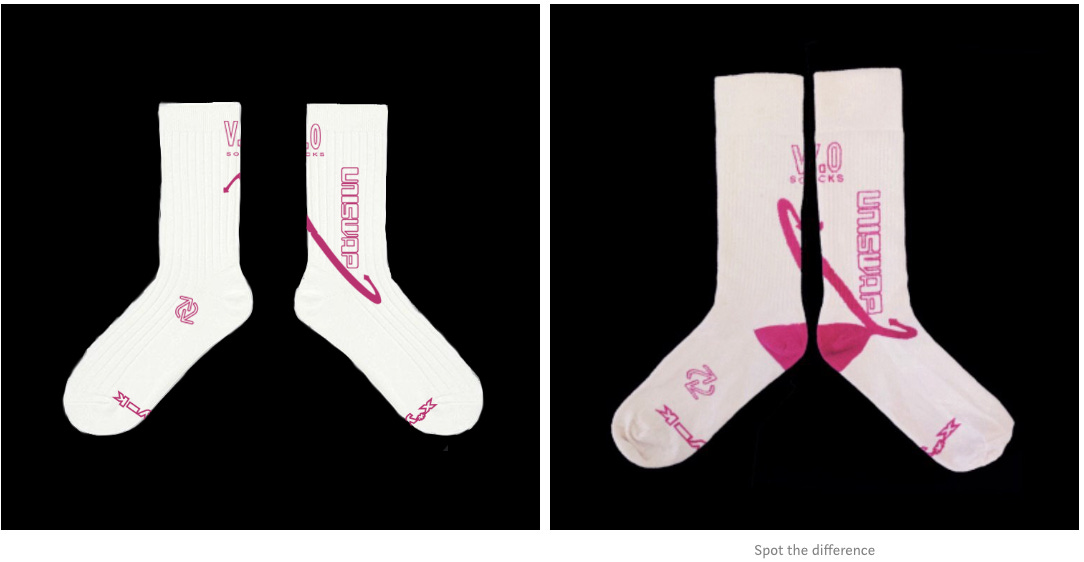Fashion Faux Pas Leads to Unisocks Fork
Happy Friday defiers! Today’s newsletter provides a window into the geeky, colorful Ethereum community. Here’s what’s happening:
Uniswap’s Unisocks experiment was forked
New potential funding model for Ethereum projects
Augur announced incentives for global liquidity pool
Unisocks Was Just Forked Into Unisocks Classic
Socksgate2019 is upon us!
Okay, this gets really in the weeds of Ethereum’s quirky culture, so bear with me.
To understand what happened yesterday, you have to first know that one of the most popular exchanges in decentralized finance, Uniswap, recently started selling tokens linked to socks. That’s not some weird technical term; we’re actually talking about the garment you put on your feet. They even have their own exchange called Unisocks and the name for the token is SOCKS, naturally.
There will be a limited amount of SOCKS –only 500 will ever exist and they’re all in a liquidity pool in the exchange, which has helped push the price of SOCKS higher. The tokens are currently trading at around $68 after first selling for $12 in May. SOCKS can be bought and sold with ETH and they will be later redeemed by actual socks with a Uniswap white and pink design.
It’s an experiment in 1) buying real things with crypto, 2) providing price discovery for rare editions merchandise, 3) making sure the merch creator always benefits from sales. It could also provide some revenue for Uniswap, which doesn’t have a business model yet.
Now for the “controversy:” An anonymous group of developers discovered that –gasp!–the socks’ design changed. This, they argue, upends the whole experiment. The point of linking stuff to a blockchain is to take advantage of the immutability of the technology to make sure buyers are getting the actual thing they bought and not a fake, or in this case, not a version that was modified by a centralized party somewhere along the distribution chain.

Image source: Unisocks Classic Medium Post
So what’s the solution? Fork Unisocks, of course!
And that’s how Unisocks Classic (a reference to Ethereum Classic) was born. The project self-described as “the REAL Unisocks,” will keep the original socks’ design. All holders of SOCKS tokens before the fork now have an equivalent amount of SOCKSCLASSIC tokens and will be able to redeem both pairs.
Unisocks Classic devs tout their technical purity, preserving Proof-of-Sock and sockchain technology, and Unisocks maximalists are sure to emerge :)
Extremely geeky blockchain/socks jokes aside, linking things to blockchains –from food to rare collectibles– is an actual potential use case and this shows that for the process to be effective, there needs to be some physical link between the item and the token or blockchain. There are different solutions for this already in the market, like using RFID chips.
Or in the case of an open source project like this one, it can be forked. Users double their tokens and in this case, their socks. Everyone wins.
The No-Loss Lottery But for Ethereum
Speaking of forks, Eric Conner of Gnosis and EthHub proposed forking Pool Together to create a fund for Ethereum public goods. Contributors would pool Dai, which would be deposited on Compound Finance to gain interest, interest earnings would be donated to ETH projects, and participants can take back their principal at any point, he tweeted.
The question I have is what’s the incentive for people to donate the interest on their assets. Some might do it for the greater good, but the project might get more people to participate if they get something in return. Maybe something like a promise of tokens or dividends from projects the interest got donated to?
Augur Announces a Global Liquidity Pool
Prediction markets platform Augur said it will start offering benefits for projects building user interfaces to share their order books, rather than operate separately. The project, called Liquidity Partner Program, will start in Augur v2 and is aimed at providing the incentives to create a global liquidity pool.
Prediction markets on Augur and in crypto in general have failed to pick up steam. Increased liquidity, which essentially comes down to speculators finding a counterpart for any bet, will be key in driving more users.
The Defiant will become a paid newsletter in the next couple of months. As a way to say thank you to the first ones joining me in building this platform, anyone who signs up before the paid period will pay just $8/month and $80/year for the best (and only) daily, in-depth DeFi content out there, compared with the full price of $10/month and $100/year.
Subscribe now! You’ll be supporting independent journalism and allowing me to continue illuminating this fascinating corner of the world for you.


